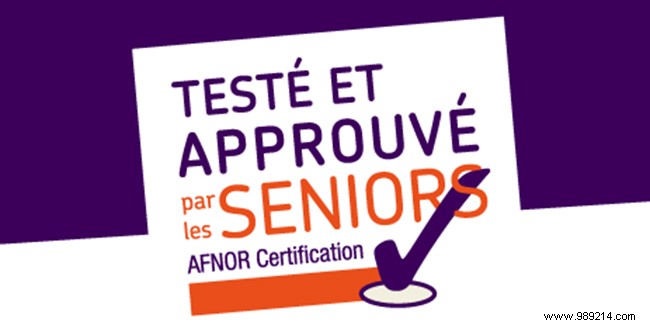
In October 2016, a new label among the already existing quantity appeared:"Tested and approved by seniors". The target of people of a certain age is becoming so important in terms of market share that Afnor, by creating this label, wants to allow seniors to better distinguish products that are more or less well suited to them.
According to CREDOC (Research Center for the Study and Observation of Living Conditions), more than 50% of consumer spending is made by seniors today in France! As a result, being able to distinguish products "tested and approved by seniors" can become a real commercial asset for manufacturers.
This new label concerns the majority of everyday consumer products, either specifically designed for seniors or intended for everyone. To meet the label's requirements, the product must win a battery of user tests conducted with a panel of consumers over 60 years old and with professionals such as ergonomists and occupational therapists.
The label guarantees the consumer that the product is ergonomic, that is to say adapted to the capacities of the oldest people in terms of ease of use, handling and handling.
Everyone will have experienced it, a phone with small keys on which the numbers are written in reduced size, becomes difficult to use as you get older. The same goes for the remote control of televisions, tablets, computers or high-tech devices in general. Household appliances, alarm and lighting systems, heating controls are no exception to the rule either.
In a perfectly reconstructed model apartment, the panel of consumers aged over 60 will test the products in real situations, and evaluate them according to the following criteria:perceived usefulness, perceived ease of use, autonomy in use, approval, mastery of the object, influence of those around you, image, relevance, quality produced, demonstration, intended use, specific senior problem, safety perceived.
Professional ergonomists and occupational therapists make their contribution by observing seniors handling the products and by handling them themselves, which gives rise to an assessment according to the following criteria:the visibility of the object, the correspondence between the object and the environment, autonomy and control by the user, consistency and standard (standardization), prevention against errors, recognition, flexibility and efficiency of use, design, adaptations specific to the aging.